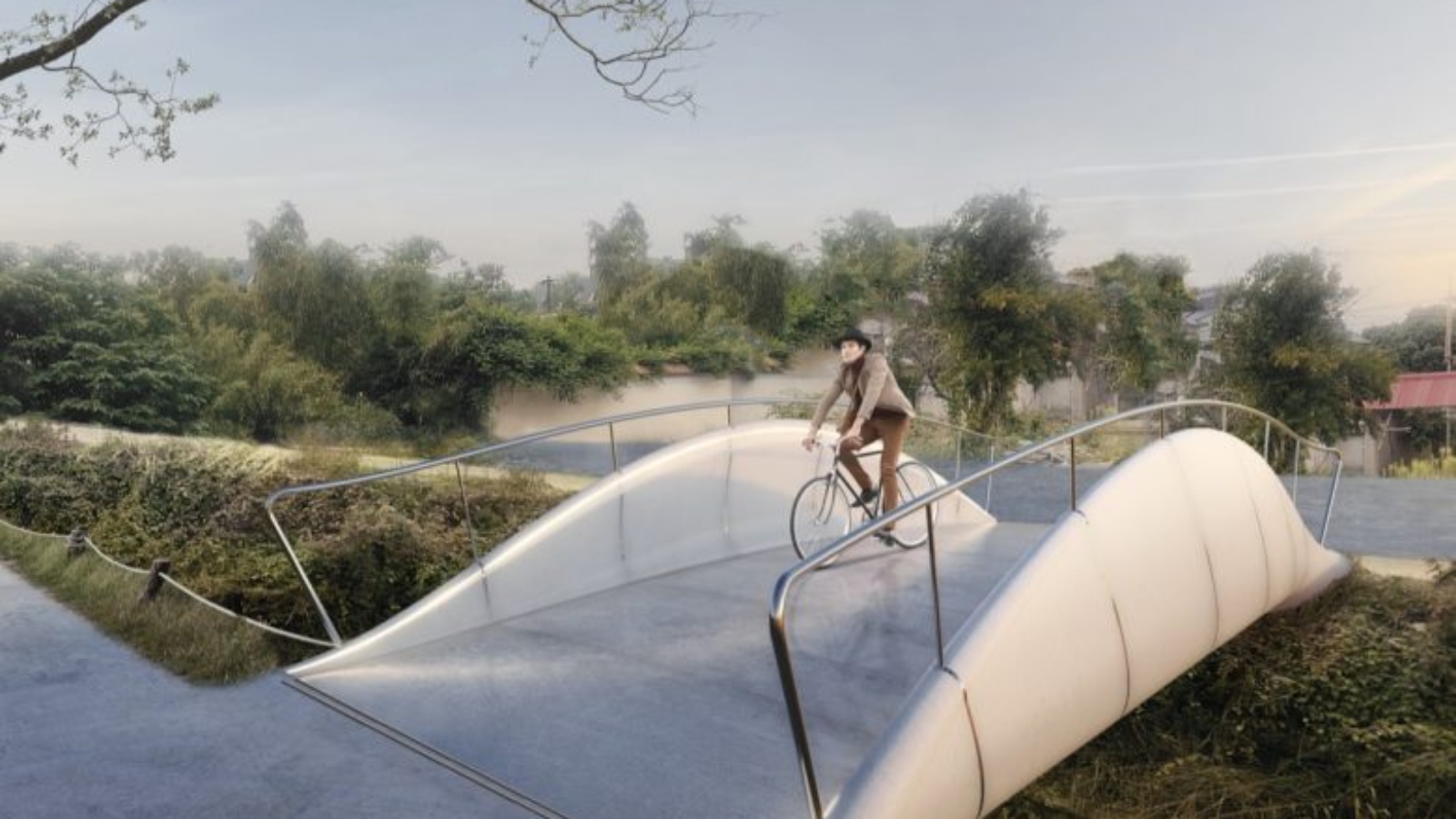Barberio Colella Architetti (Maurizio Barberio and Micaela Colella) + Angelo Figliola, and Zheng Hui Chen designed a new footbridge to be installed over the Fuxi River in Moganshan Town, China. The project named Flowin’, set to be completed in 2023, will use robotically 3D printed thermoplastic formwork and 13 cubic meters of ECOPact concrete material from Holcim.
The design of Flowin’ begins with carefully analyzing the chosen project site. The generation of the form was guided by a series of parameters: the relationship with the anthropic and natural context, the tectonics, and its structural behavior. Regarding the first two aspects, the starting point is represented by a catenary curve that reconnects the two banks of the river, re-establishing a continuous flow aimed at creating a symbiotic relationship between nature and artifice.

Manufacturing on Demand
The choice to create the infrastructure as a monolith in the reinforced concrete has a dual value, formal and technological: to evoke a rock that blends into the natural context and at the same time facilitate the operations of fabrication, assembly, and installation, avoiding secondary technological systems. From the catenary curve, a surface was generated and then discretized into seven variable thickness blocks that taper towards the center to minimize the use of steel and avoid dangerous corrosion phenomena. From a structural point of view, the design of an arch-shaped form guarantees an infinitely rigid behavior. These considerations were supported by the structural analysis which certified a maximum displacement of 0.065431 cm.
For the production of the individual blocks that make up the bridge, a system of digital prefabrication has been developed to obtain complex and customized shapes without increasing production time and costs. This process involves 3D printing using a 6-axis robotic arm to create reusable thermoplastic formwork to contain the C30 concrete pour, which is then detached at the end of the setting process thanks to the presence of special additives. This way, the formwork never becomes waste, as the material can be reused in other production processes due to its physicochemical properties. Using this technology to create the individual units of the bridge overcomes two critical issues of the traditional construction process using reinforced concrete, such as the production of non-recyclable complex formwork and the problematic management of formal complexity.

Moreover, the use of an industrial robot allows for the decentralization of the production process and reduces the costs of managing the construction site. After the individual blocks are produced, the bridge will be assembled in the production facility and then transported and installed on-site using a standard crane used in construction processes. Then, the pre-tensioning process will take place through the inspection hatches designed specifically for this purpose. The installation of the entire infrastructure, rather than individual blocks, avoids constructing costly centering devices that in most cases cannot be reused in other processes and become waste. The only operation to be carried out on the project site is the preparation of the reinforced concrete structural abutments to which the bridge will be anchored. The technological simplicity and homogeneity minimize maintenance operations, which are mainly related to the pre-tensioning of the steel cables, the operation of the integrated LED lighting system, and the rainwater collection and drainage system.
You might also like:
3DCP Group builds Europe’s first 3D printed school in Ukraine: Ukraine has faced severe challenges due to the full-scale invasion of Russia, resulting in the destruction or damage of over 2,000 schools, with 277 schools completely demolished, as reported by the Ministry of Education and Science of Ukraine. In light of this crisis, the primary goal of this project is to swiftly respond to the dire shortage of educational infrastructure in the country.
* This article is reprinted from 3D Printing Media Network. If you are involved in infringement, please contact us to delete it.
Author: Davide Sher


Leave A Comment